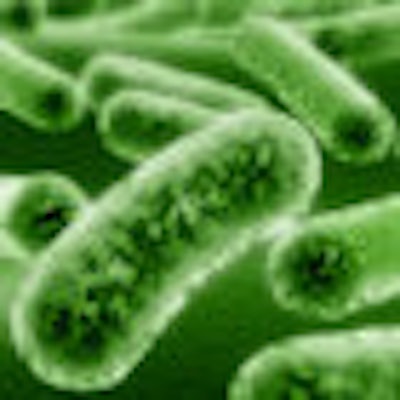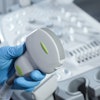
If it takes a thief to catch a thief, maybe it takes bacteria to fight bacteria. That's the logic behind probiotics -- an increasingly popular approach to treating diseases including caries, periodontitis, and halitosis.
“Probiotics is gaining momentum in the U.S., but compared to the rest of the world, we're dramatically behind.”
— Jeffrey Hillman, D.M.D., Ph.D.
Next month, the Florida company ONI BioPharma plans to launch a suite of products that contain three strains of streptococcus native to the human mouth. These bacteria are harmless to humans, but deadly to their relative, Streptococcus mutans, and other disease-causing bacteria, according to Jeffrey Hillman, D.M.D., Ph.D., the company's chief scientific officer.
"Probiotics is gaining momentum in the U.S., but compared to the rest of the world, we're dramatically behind," Dr. Hillman said.
Indeed, companies like BLIS Technologies of New Zealand and BioGaia of Sweden are already marketing probiotic products for oral health around the globe via the Internet. If you haven't gotten questions from your patients -- or a sales call -- you probably will soon. But some oral biologists warn that more research needs to be done before patients start intentionally infecting their mouths with bacteria of any kind.
An ecological disaster
The theory behind probiotics is simple. A normal human body contains more bacteria than human cells. Some cause disease. But over millennia, most of our bacteria evolved along with us; those that killed their hosts were likely to die out; and selective pressure favored harmless freeloaders. Some bacteria even lend a hand -- for example, by helping break down carbohydrates that human intestines can't metabolize on its own.
Others crowd out, or even poison, harmful bacteria and fungi. Researchers are now trying to enlist this last category of bacteria to combat infections. For example, taking antibiotics as medicine sometimes kills the Lactobacillus species that otherwise keep harmful intestinal bacteria and yeast in check, leading to diarrhea, vaginitis, and other symptoms. Several studies have shown promise in treating these problems by reintroducing species of Lactobacillus and beneficial yeast.
"In the GI tract, researchers are starting to make some headway," said John Ruby, D.M.D., Ph.D., an associate professor of dentistry and oral biologist at the University of Alabama at Birmingham School of Dentistry.
In the mouth, Dr. Hillman and others see a similar kind of ecological crisis. They argue that when human beings began to eat more sugar a couple of centuries ago, an imbalance was created favoring S. mutans. These bacteria are highly adapted to converting sugar to lactic acid, which poisons some of its competitors and coincidentally dissolves hydroxyappetite.
Much of the research so far has explored the use of lactobacilli strains already being produced as gastrointestinal treatments. The active ingredient in the BioGaia products, for example, is L. reuteri. The company can cite at least one study in which patients chewing gum impregnated with L. reuteri had slightly less gingivitis than patients chewing a placebo gum (Swedish Dental Journal, 2006, Vol. 30:2, pp. 55-60).
Perhaps the most common form in which such bacteria are found is in yogurt; many common brands contain live lactobacillus cultures, and some research has shown that yogurt reduces the count of S. mutans in the mouth (Archives of Oral Biology, August 2001, Vol. 46:8, pp. 705-712). But it's unclear whether bacteria or some other ingredients in yogurt, such as casein, are responsible.
And researchers such as Dr. Hillman argue that lactobacilli from the intestines aren't likely to stick around long enough on the teeth. "They aren't normal inhabitants of the mouth," he said. "They're gut strains. I'm all in favor of eating yogurt, but I eat it for gastrointestinal health."
Dr. Ruby adds that most lactobacilli also convert sugar to lactic acid. "I don't think they're the answer for treating oral disease because they play a role in causing it," he said.
Instead, Dr. Hillman's ONI BioPharma (formerly known as Oragenics) is developing two types of treatment using organisms native to the human mouth. Probiora 3 contains S. rattus JH145, S. uberis KJ2, and S. oralis KJ3. S. rattus naturally produces less lactic acid but competes against S. mutans, Dr. Hillman said, while the two other bacteria produce hydrogen peroxide that kills the bacteria responsible for periodontal disease.
In fact, he said these organisms help keep the harmful bacteria in check in a healthy person's mouth, so consuming them may restore that balance.
ONI BioPharma will market Probiora 3 to consumers in tablets called Evora Plus and Evora for Children, and in the future will market a similar product directly to dentists, Dr. Hillman said. The company will advise chewing and spitting out a tablet at least once a day to keep re-establishing the beneficial organisms.
In his research, he said, daily swishing with JH145 reduced the levels of S. mutans "six- to sevenfold," with similarly impressive results for the microscopic periodontitis warriors. That research remains unpublished, however.
Where's the proof?
In the meantime, the company is also testing a genetically modified strain of S. mutans, A2JM. Dr. Hillman and his colleagues enhanced the organism's ability to produce an antibiotic that kills other strains of S. mutans, and they deleted a gene that produces lactic acid. He hopes that patients can be inculcated with A2JM -- which will be marketed as SMaRT Replacement -- just once and enjoy protection from S. mutans for life. The organism is now in phase I clinical trials of safety and a few years away from the market.
It's a promising approach, said Jeremy Burton, Ph.D., a University of Otago researcher who now works for BLIS, in an e-mail. "The question is how consumers will accept such organisms."
Rather than a new life form created in a laboratory, consumers might prefer to treat themselves with a different wild strain of oral bacteria, he reasoned, namely S. salivarius. His company is marketing S. salivarius, found primarily in the back of the tongue, as a treatment for bacterial throat infections such as strep throat. He and his colleagues have also shown that it might knock out some of the bacteria responsible for halitosis (Journal of Applied Microbiology, April 2006, Vol. 100:4, pp. 754-764). So they're selling it as a treatment for "oral health" in general.
BioGaia is even more explicit: "Use regularly for good oral health and when gums are sensitive or bleeding." The German company BASF and the Taiwanese company GenMont Biotech are also reportedly ready to market anticaries probiotics. "The effectiveness has been demonstrated," BASF states on its Web site. And TheraBreath, a Los Angeles company, claims to have gotten good results with a controlled trial using the BLIS organisms in its Aktiv-K12 ProBiotics.
But so far, these claims have not yet stood the gold-standard test: large, randomized, controlled clinical trials conducted in multiple research centers and published in peer-reviewed journals.
Until they do, many independent researchers hesitate to advocate the products. "I think it's not safe to recommend any probiotics, especially for oral health, yet," Leena Näse, D.D.S., M.S., of the University of Helsinki, wrote in an e-mail to DrBicuspid.com -- even though her group found slightly reduced caries in a controlled trial of L. rhamnosus GG in 594 daycare children (Caries Research, November-December 2001, Vol. 35:6, pp. 412-20).
"I would wait for solid evidence before I recommend anything," agreed Dr. Ruby. "To just go out and say this is going to work without the evidence is getting back to the days of elixirs in medicine chests."
So what's his solution to the oral ecology crisis? Eat less sugar.



















